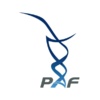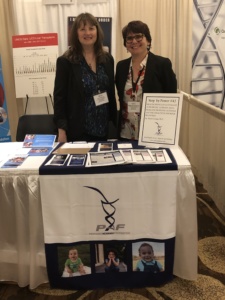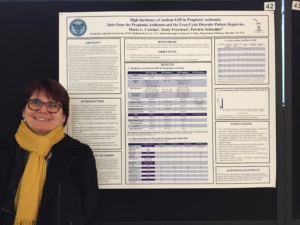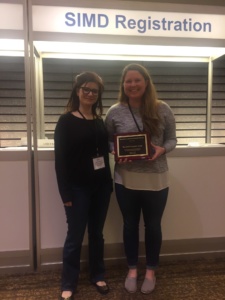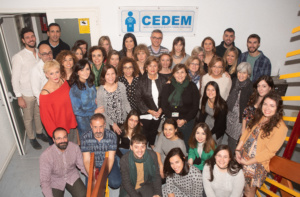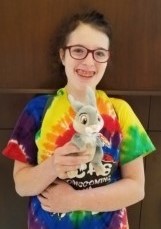Liver Transplantation
部分 2: Outcomes Following Liver Transplantation in Children with PA and MMA
James Squires, MD, MS
博士. Squires is a liver disease specialist at UPMC Children’s Hospital of Pittsburgh and an assistant professor of pediatrics at the University of Pittsburgh School of Medicine.
Jodie M. Vento, MGC, LCGC
Jodie Vento is a genetic counselor and manager of the Center for Rare Disease Therapy at UPMC Children’s Hospital of Pittsburgh.
部分 1 of this article, published in the Spring 2018 issue, provided answers to questions that families may have about what to expect from a liver transplant for a child with Propionic Acidemia (PA). Here, in Part 2, the authors summarize and explain the findings of a recent study of outcomes in children with PA and methylmalonic acidemia (MMA) who received liver transplants at UPMC Children’s Hospital of Pittsburgh.
Why did you do this study?
Before we get to why we did this study, please allow us to back up a bit and briefly discuss the history of liver transplantation for PA and MMA, which was first proposed in the early 1990s. Because the enzyme deficiencies that cause PA and MMA exist throughout the body, not just in the liver, liver transplantation was never expected to be a cure for these diseases. The thinking was that by providing enough functional enzyme to minimize, if not eliminate, metabolic crises––the most severe complications of PA and MMA for affected children, as well as one of the most frightening features of these diseases for families––a liver transplant could enhance stability and improve quality of life for affected children.
In recent years, policies on the allocation of donor livers in the United States have changed to give priority to patients with PA and MMA because of their risk of sudden, life-threatening metabolic crises. As a result, children with these disorders can now be listed for a liver transplant based on their diagnosis alone rather than on disease complications or severity.
A recent study, based on statistical analysis,found that liver transplantation for PA and MMA may increase both the length and quality of patients’ lives and decrease health care costs over a patient’s lifetime. 但, because PA and MMA are rare disorders, it has been difficult to gather a strong body of evidence showing how well patients fare after undergoing a liver transplant.
The Pediatric Liver Transplant Program at UPMC Children’s Hospital of Pittsburgh was established in 1981 by world-renowned transplant surgeon Thomas E. Starzl, MD, 博士. Our Director of Pediatric Transplantation, George Mazariegos, MD, FACS, pioneered liver transplantation for children with metabolic diseases in 2004. Since then, UPMC Children’s has performed more than 330 liver transplants for children with metabolic diseases, more than any other transplant center. We’ve also performed more liver transplants in children than any other center in the United States and more living-donor transplants than any other pediatric center in the country. Our one-year survival rate for pediatric liver transplant patients is 98%, exceeding the national average of 95%, according to the Scientific Registry of Transplant Recipients (January 2018 release).
We decided to do this study because, given the breadth and depth of our experience in this field, we thought that we could make a useful contribution to medical knowledge by gathering and evaluating all of the information available to us on outcomes for all of the patients who have undergone a liver transplant for PA or MMA at our institution.
How did you do this study?
We searched our medical records database to identify all patients with a diagnosis of either PA or MMA who received either a liver transplant or a combined liver and kidney transplant between 2006 and 2017.To comply with patient privacy regulations, we first removed any and all information that could personally identify these patients. Then we examined data from their medical records and recorded information such as their age and family history, medical treatment received prior to the liver transplant, laboratory tests performed, and how they fared both immediately after the transplant and in the following months and years.
What did the study find?
We identified a total of nine patients with PA (three patients) or MMA (6 patients) who had undergone a liver or liver and kidney transplant at UPMC Children’s between 2006 和 2017. The age at which patients received their transplant ranged from one year old to 21 years old; the median, or midpoint, was nine years old. Five patients were female and four male. Eight of the nine patients had been diagnosed during their first week of life; one patient was diagnosed at age eight months.
Prior to the transplant, all of the patients had been treated with protein restriction and carnitine supplementation. Several were also receiving medication to reduce ammonia levels in the blood. Eight of the nine patients were being fed by a gastrostomy tube (also known as a “G-tube”). All were experiencing frequent metabolic crises that often required hospitalization. Additional disease-related complications included cardiomyopathy (damaged heart muscle), metabolic stroke, pancreatitis, and low blood cell counts.
Five of the six patients with MMA received combined liver and kidney transplants. One patient with MMA and all three patients with PA underwent liver transplants only. Patients’ median post-transplant length of stay in intensive care was just short of 30 days, while the total transplant-related hospital stay averaged 55 days. Patients were followed after their transplant for a median of 3.5 years (range one year to more than 11 years).
Six of the nine patients developed symptoms of liver rejection; one patient developed symptoms of kidney rejection. Rejection episodes were treated with steroids and higher doses of anti-rejection medication to suppress the immune system. None of the nine patients experienced transplant failure.
Two patients needed treatment for blood clots in the main artery that carries blood to the liver. A third patient needed treatment for a blockage in a vein that transports blood from the liver back to the heart.
Four patients experienced a build-up of bile in the liver that was caused by a blocked bile duct and required treatment with a biliary catheter. At the last follow-up, three of the four patients had been able to discontinue use of the biliary catheter.
Five patients developed viral infections that required treatment. No patients experienced a complication known as post-transplant lymphoproliferative disorder, a dangerous rapid increase in white blood cells that can sometimes occur in people who are taking medication to prevent rejection of a transplanted organ.
No patients have experienced metabolic crises since the transplant. All nine patients showed improved metabolic control––indicated by normal levels of lactic acid in the blood––during the first month after the transplant. Kidney function stabilized or improved in all patients with MMA. At the two-year post-transplant assessment, heart function had improved in a patient with PA and severe cardiomyopathy.
What conclusions can be drawn from the study’s findings?
In this study of nine children with PA or MMA who were followed for an average of 3.5 years, we show 100 percent survival for both patients and their transplanted organs.
For MMA, these findings are similar to those of other recently published reports. For PA, although our population is relatively small (three patients), our finding of 100 percent survival for both patients and transplanted organs stands in contrast to other published reports that found poor survival among patients with PA following a liver transplant.
Still, many patients experienced complications in the period immediately before, during, and after the transplant. The high rate of complications underscores the complexity of these metabolic diseases. The most common complications were those involving the blood vessels, including blood clotting in the main artery of the liver. This complication has been previously reported.
All patients had reduced levels of lactic acid in the blood, indicating improved metabolic control, both shortly after the transplant and at later postoperative follow-up. Complications such as kidney disease (in patients with MMA) and cardiomyopathy (in patients with PA) stabilized and improved after transplantation.
The fact that no patients experienced metabolic crises after transplantation indicates that partial enzyme replacement via a liver transplant enabled a “resetting” of patients’ metabolic fitness.
At UPMC Children’s our approach to nutritional support after a liver transplant has been to gradually ease protein restriction, with the goal of establishing a long-term individualized level of support for each patient. It is unlikely that protein restriction can ever be completely eliminated. 但, the results of this study show that––with close monitoring by an experienced interdisciplinary team––protein restriction can safely be relaxed, in an individualized fashion, after a liver transplant.
What do the study results mean for children with PA and their families?
A liver transplant cannot cure PA. It can, 但, reduce or eliminate metabolic crises and result in greater stability and better quality of life for children with PA. The decision as to whether a liver transplant is right for your child with PA is one that every family must make for themselves, based on their knowledge of their child and in consultation with a multidisciplinary team of experts who specialize in liver transplantation for metabolic diseases.
This study adds to the increasing body of evidence that liver transplantation can be performed safely and successfully in patients with severe, complex metabolic conditions such as PA and MMA, especially when performed at centers with broad and deep experience in the management of these highly challenging conditions.
Reference: Critelli K, McKiernan P, Vockley J, Mazariegos G, Squires RH, Soltys K, Squires JE. Liver Transplantation for Propionic Acidemia and Methylmalonic Acidemia: Peri-operative Management and Clinical Outcomes. In press, Liver Transplantation. Accepted for publication June 2018.
